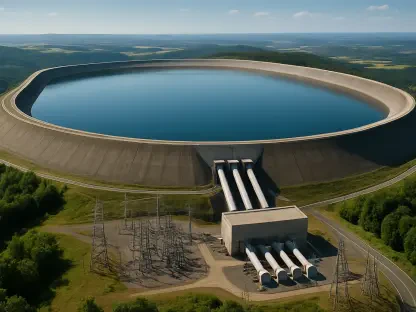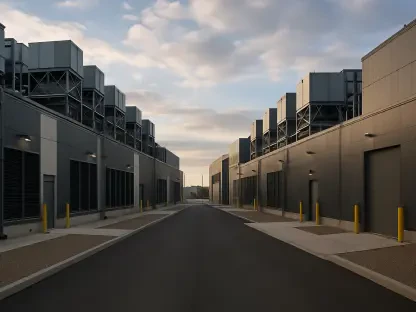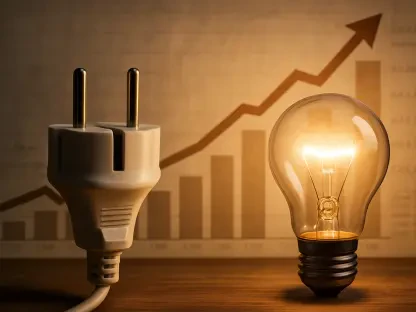Tax credits stemming from the Inflation Reduction Act (IRA) have emerged as a cornerstone in the quest for U.S. energy independence, prompting significant shifts in the nation’s energy landscape. These credits, specifically targeted at renewable energy generation, have ignited investment across the sector, aligning with national goals of increased energy autonomy and bolstering the domestic economy. With renewable sources like wind, solar, and hydroelectric power accounting for over a fifth of the energy mix, these tax incentives serve as pivotal mechanisms in reducing reliance on foreign energy. This shift not only enhances the resilience of U.S. infrastructure but also contributes to broader economic stability and growth.
The implementation of the IRA has catalyzed substantial changes within the American energy market. The incentives have fueled unprecedented levels of construction and manufacturing activity, transcending traditional political divides to generate economic benefits across the nation. Both conservative and liberal states have witnessed economic revival as job creation in new sectors such as offshore wind maritime roles and wind technicians has become prevalent. These developments highlight the indispensable role of clean energy projects in fostering economic growth and fortifying the country’s infrastructure against future challenges.
The Role of Tax Credits in Renewable Energy Expansion
Investment and Infrastructure Development
Tax credits associated with the IRA have spurred robust investment into renewable energy technologies, rejuvenating America’s energy infrastructure. This influx of capital has been vital in advancing domestic capabilities, as major corporations and small businesses alike embrace renewable projects. The development of wind farms, solar parks, and advancements in hydroelectric technology have thrived under these incentives, encouraging infrastructural growth and job creation. By facilitating easier access to funding, tax credits enable developers to explore innovative solutions, improving the efficiency and reducing the long-term costs of energy production.
Furthermore, the trickle-down effects of the IRA’s tax credits are apparent not only in energy but also across industry sectors. The boon to construction and manufacturing activity serves as a testament to the IRA’s potential to unite diverse political factions under a shared vision for economic benefit. Manufacturing hubs have sprouted around renewable energy projects, stimulating job growth in communities previously reliant on traditional energy industries. These economic opportunities reflect a broader trend toward diversification and resilience within the U.S. energy portfolio, reducing vulnerabilities linked to single-source dependencies.
Economic and Environmental Implications
The expansion of renewable energy under the IRA has far-reaching economic and environmental benefits. Opting for energy alternatives like wind and solar reduces greenhouse gas emissions, reinforcing the United States’ commitment to combating climate change. The transition from fossil fuels not only addresses environmental concerns but also aligns with economic imperatives by minimizing energy costs and increasing competitiveness on the global stage. Consumers benefit from cost reductions as energy remains affordable, contributing to greater household savings.
As energy sectors evolve, the IRA’s incentives present ample room for technological innovation. The emphasis on reducing costs and increasing production efficiency drives advancements in clean energy technologies, creating an environment ripe for breakthroughs that expand renewable capabilities. These innovations not only strengthen domestic markets but also hold potential for foreign export, enhancing the U.S. position in global energy markets. The dual objective of environmental responsibility and economic prosperity underscores the multifaceted appeal of the IRA’s approach to energy reform.
Enhancing Energy Independence and National Security
Strengthening Infrastructure and Reducing Reliance
A significant advantage of IRA-induced renewable energy projects lies in their contribution to strengthening U.S. energy independence. By diversifying energy sources toward renewable alternatives, the nation mitigates risks associated with dependency on overseas energy markets. Shifts toward solar and wind lessen the need for foreign oil and gas, ensuring more stable domestic supplies. This increased autonomy enhances infrastructure resilience and safeguards against potential disruptions in global energy trade.
The intersection of energy independence and national security is crucial to maintaining a stable economy and safeguarding societal interests. By reducing reliance on adversarial nations for energy resources, the U.S. strengthens its defense against economic and geopolitical pressures. A strong, self-sufficient energy sector acts as a buffer, supporting the establishment of secure energy supplies vital for national and economic resilience. Additionally, the domestic sourcing of critical materials such as rare minerals ties into broader security concerns, further insulating the nation from external threats.
Broader Impacts on National Security
The diversification of energy sources underlines sound economic and security policy, providing a multifaceted approach to energy management. A varied energy mix deters monopolistic practices that could otherwise destabilize economic conditions, reminiscent of historical examples like Standard Oil. The resultant competition drives innovation, prompting cost-effective developments that benefit both producers and consumers while securing the energy future.
From the perspective of national security, maintaining a diversified energy portfolio parallels a well-balanced investment strategy. By hedging against vulnerabilities through energy independence, the U.S. positions itself as less susceptible to cyber and physical threats. This strategic variability not only supports national security objectives but also reinforces economic vitality by ensuring uninterrupted access to energy resources essential for modernization efforts like data centers and electric vehicle networks. These advances underline the coalescence of national security and economic policy within the IRA framework.
Addressing Critiques and Future Considerations
Evaluating Policy Implications
While some critiques of the IRA exist, the overarching evidence suggests notable progress in clean energy adoption and economic stimulation. The tax credits extended under the IRA have been instrumental in driving innovation and promoting economic growth. Despite calls for a repeal, the act’s incentives continue to demonstrate substantial advantages in energy sector diversification and infrastructure development. Rather than dismantling the act, a more prudent approach involves revising policies to enhance their effectiveness.
Ongoing policy discourse remains critical to capitalizing on past successes while addressing areas requiring further development. Policymakers are encouraged to heed critiques that offer constructive improvements, avoiding abrupt policy shifts that could destabilize the achieved progress. Such considerations align with the broader objectives of sustained innovation and economic growth, ensuring the benefits of the IRA continue to resonate across both energy and economic sectors.
Sustaining Momentum for Future Growth
The Inflation Reduction Act (IRA) has introduced tax credits that are pivotal in the U.S.’s journey toward energy independence, causing notable shifts in the energy sector. These credits are primarily aimed at fostering renewable energy, spurring investments in wind, solar, and hydroelectric energy, which now comprise over 20% of the energy mix. Such incentives are essential in diminishing reliance on foreign energy sources, thereby enhancing the nation’s energy resilience. This transition not only strengthens U.S. infrastructure but also propels economic stability and growth.
The IRA’s implementation has sparked remarkable changes in the American energy market, prompting a surge in construction and manufacturing activities. These benefits extend across political lines, revitalizing economies in both conservative and liberal states. New industries, like offshore wind and wind technician roles, have emerged, driving job creation and economic revival. These clean energy initiatives underscore their crucial role in boosting economic development and reinforcing the nation’s infrastructure against future challenges.









